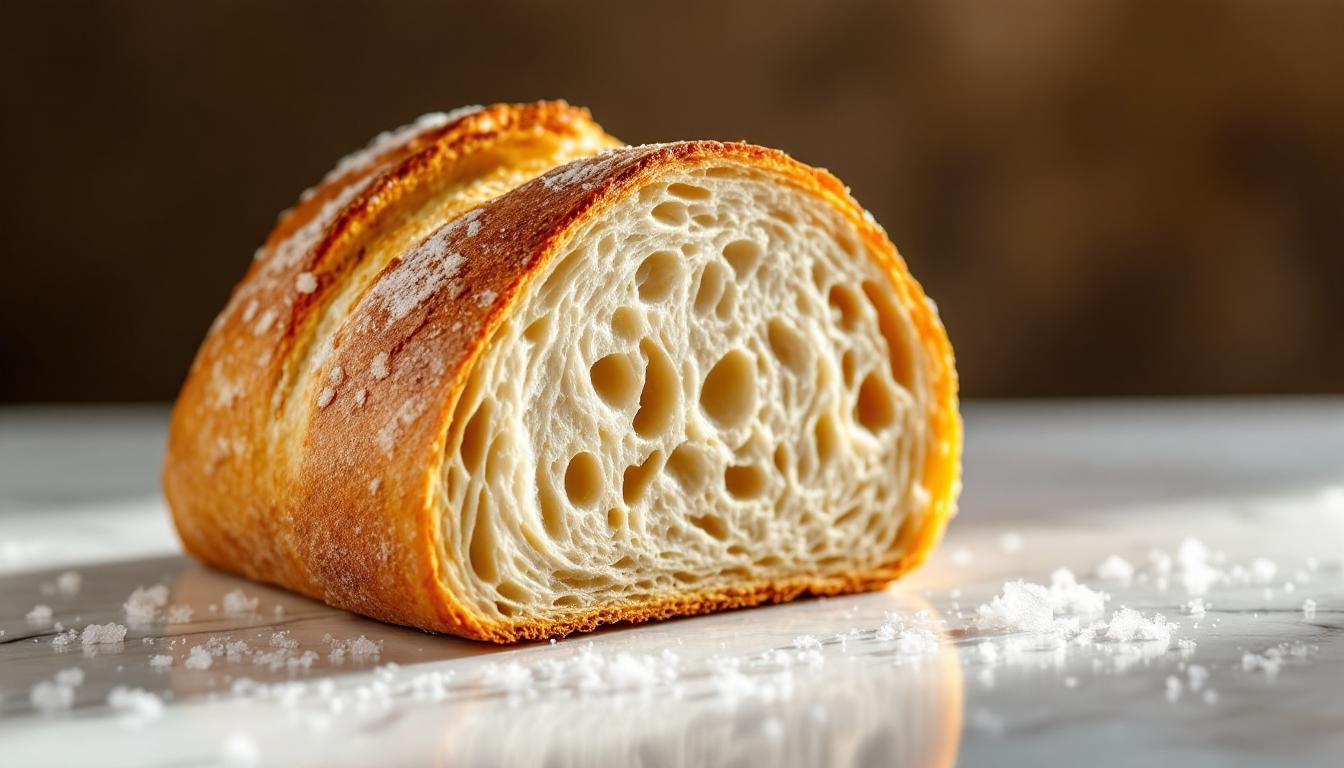The Tesco Finest Oat And Barley Loaf might seem like a healthy choice with its premium branding and wholesome-sounding ingredients, but a closer nutritional analysis reveals some concerning aspects that deserve attention. This artisanal-appearing bread has become a staple in many UK households, but what’s really inside this loaf?
The Misleading “Health Halo” Effect
Despite its premium “Finest” branding and prominent mention of oats and barley, this loaf is primarily made from refined wheat flour. The product contains just 7% oats and 4% barley, meaning the overwhelming majority is processed white flour. Dr. Melissa Jenkins, registered dietitian, explains: “Many consumers see ‘oat and barley’ and assume they’re getting a primarily whole grain product, when in reality, these healthier grains are present in minimal amounts.”
The Carbohydrate Conundrum
Each slice delivers approximately 21g of carbohydrates with only 2g of fiber. This poor fiber-to-carb ratio creates a relatively high glycemic impact, potentially causing blood sugar spikes. The bread contains 44.9g of carbohydrates per 100g, which accounts for nearly 60% of its caloric content. Regular consumption can contribute to insulin resistance over time, especially when combined with other refined carbohydrates throughout the day.
Hidden Additives Your Body Doesn’t Need
Beyond its primary ingredients, this bread contains multiple concerning additives:
- Calcium propionate – a preservative linked to behavioral changes in sensitive individuals
- Mono- and di-glycerides of fatty acids – emulsifiers that may disrupt gut bacteria
- Mono- and di-acetyl tartaric acid esters – synthetic compounds for texture enhancement
- Ascorbic acid as a flour treatment agent – not for nutritional purposes but for dough processing
The Salt Factor: Sneaking Toward Your Daily Limit
Each slice contains 0.43g of salt, representing approximately 7% of your recommended daily maximum intake. Consume just two slices, and you’ve already used 14% of your daily salt allowance, contributing to potential blood pressure issues when consumed regularly. Salt is particularly concerning as bread products are one of the leading sources of hidden sodium in the Western diet.
“Many of my patients are shocked to learn how much salt and additives are in their ‘healthy’ bread choices. These hidden ingredients can undermine health goals despite the consumer’s best intentions.” – Dr. Sarah Richardson, Cardiologist
The Digestive Impact: What Happens After Consumption
The combination of refined flour and minimal fiber means this bread digests rapidly, potentially leading to hunger returning quickly after consumption. Additionally, the various emulsifiers may disrupt gut microbiota in sensitive individuals. One patient reported: “After switching from processed bread to true sourdough, my bloating issues decreased significantly within just one week.”
Nutritional Comparison With Truly Healthy Alternatives
When compared to genuinely nutritious bread options, the Tesco loaf falls short:
- True whole grain bread: 4-5g fiber per slice (vs. 2g)
- Sprouted grain bread: Lower glycemic impact, more bioavailable nutrients
- Traditional sourdough: Naturally fermented, often additive-free, improved digestibility
- Rye bread: Higher fiber content, more sustained energy release
What Your Body Really Needs Instead
Rather than processed bread with minimal whole grains, consider alternatives like truly nutritious grain products. Look for bread where whole grains are the first ingredient, with at least 3g of fiber per slice. Sourdough bread with minimal ingredients offers better digestibility and fewer additives. Your digestive system will thank you for making the switch to breads with cleaner ingredient lists.
“The processing methods used in most commercial breads destroy many of the natural benefits of grains. Traditional fermentation methods, like those used in real sourdough, preserve nutrients and improve digestibility.” – Professor Martin Wells, Food Science Researcher
Making Healthier Bread Choices
When shopping for truly nutritious bread, remember these simple guidelines: look for short ingredient lists (ideally under 7 items), check that whole grains are listed first, avoid breads with added sugars, and consider products with sprouted or fermented grains for improved nutrition. Your blood sugar levels, digestive system, and overall health will benefit from making more informed choices about this dietary staple.
While an occasional slice of Tesco Finest Oat And Barley Loaf won’t cause immediate harm, regular consumption as part of your daily diet may contribute to the very health issues you’re trying to avoid by choosing what appears to be a premium “healthier” option. Remember: marketing often tells only part of the story when it comes to nutritional value.
